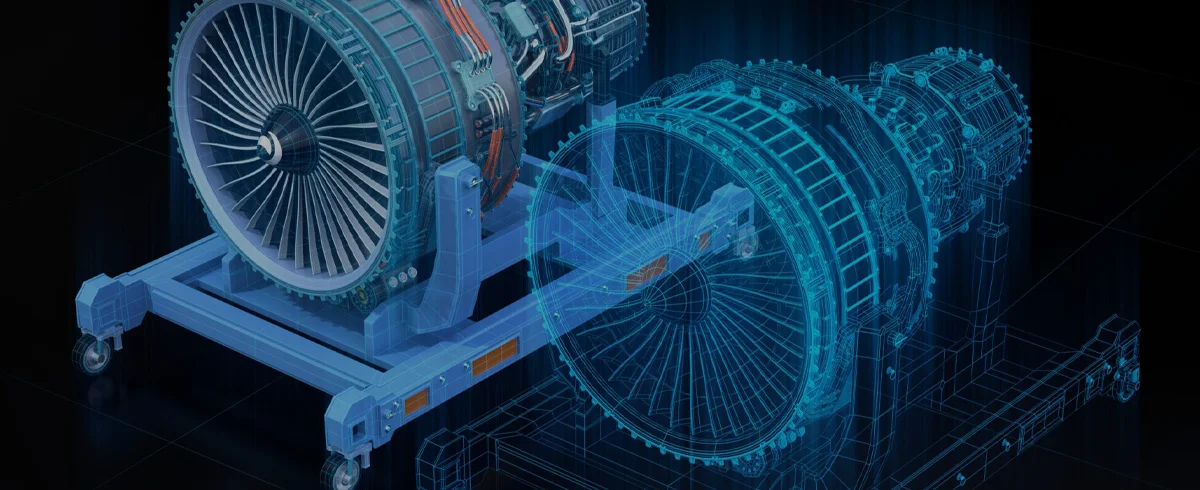Necessary Always Active
Necessary cookies are required to enable the basic features of this site, such as providing secure log-in or adjusting your consent preferences. These cookies do not store any personally identifiable data.
|
||||||
|
||||||
|
||||||
|

Digital twins are among the most sought-after business tools in the world today. One Internet-of-Things (IoT) analytics report shows that between 2020 and 2022, the digital twin technology market grew by 71%. The versatility that this technology offers, makes it attractive for varying businesses across industries. Digital twins are computer programs that utilize real-world data to develop simulations based on historical data and current conditions.
These programs can integrate with artificial intelligence, IoT, and software analytics to improve outputs. IoT sensors facilitate the transfer of real-world data needed to create virtual twins. Using the simulations, businesses can predict how a process or product will perform. But, virtual twins aren’t just about simulation. They span the entire product or process lifecycle and have service, engineering, and manufacturing use cases.
In this article, we delve deeper into the types of digital twin technology and its use cases.
Digital twin refers to the technology that supports the creation of virtual representations of physical systems, processes, or objects. This digital twin is supported by various state-of-the-art technologies including artificial intelligence, IoT, big data, machine learning, IoT, and visualization technologies like augmented and virtual reality. Essentially, digital twins have three main components:

There are four types of digital twins namely:
Also referred to as part twins, component twins are the lowest levels of virtual twins. It corresponds with the tiniest elements within a specific part of a product or equipment like a switch or an IoT sensor. Component twins facilitate performance monitoring and allow for the simulation of real-world conditions for purposes of testing their efficiency, stability, or endurance.
Product twins feature several component twins or utilize the information that component twins generate to create complex assets like smart buildings, pumps, or engines. These twins analyze how well separate parts of a system perform and interact as part of the entire process or solution. Engineers use product twins to gather insights about equipment performance and identify potential flaws.
These digital twins show how varying products combine to form functional units and duplicate product assets at the system level. They provide a large-scale view of plants or factories, allowing engineers to test varying systems for optimal effectiveness.
These constitute the highest level of virtual twins, connecting system twins into a single entity that supports synchronization and collaboration between systems. Process twins create solutions that offer a maximum view of workflows within manufacturing plants or factories for deeper and more versatile output analysis.
Virtual twinning has varying use cases. Below are the main use cases for this technology in businesses across industries:

Digital twins allow companies to develop quality products, cities, processes, systems, or buildings. By simulating physical objects, product developers test varying designs, identify design flaws, and make adjustments to improve those flaws before commencing actual production.
Companies can use digital twinning to identify service improvement opportunities and optimize the delivery of those services. Companies use virtual twinning to improve customer experience, optimize manufacturing processes, and improve operations.
Industries can use digital twins to simulate and test scenarios that facilitate the identification of inefficiencies in supply chain management processes. This information enables them to optimize the flow of materials and products in supply chains. Digital twinning is also used to simulate supply chain disruptions like transportation problems or raw material delivery delays and their impact on the business. This allows suppliers to mitigate these issues before they occur.
In operations management, virtual twin technology facilitates real-time remote access and performance monitoring of systems, assets, and processes. This enables industries to test varying scenarios and find improvement opportunities. Digital twins also help companies identify and fix performance problems like energy consumption, uptime, and maintenance needs before they can result in production losses or downtime.
Another important digital twinning use is entertainment. Considering that mixed reality technologies are at the heart of virtual twins, the technology can be used to create immersive experiences for customers in the leisure industry.
One of the leading digital twin technology examples in the entertainment industry is the simulation of attractions and rides in amusement parks. This allows customers to experience the rides virtually even before they make actual visits to the parks. With this information, customers can plan their visits better and prioritize their preferred attractions for more satisfying experiences.
Digital twinning will continue to change the way industries build, design, and maintain systems and products. Its application will expand to new sectors beyond the automobile, aerospace, health, and smart cities industries. Another trend we can expect in the future is democratized access to the technology through the digital twin-as-a-service (DTaaS) model. Delivery of DTaaS via cloud-based solutions will make digital twin technology highly affordable and accessible to businesses of all sizes. Additionally, we’ll witness the integration of virtual twinning technology with edge computing and the 5G network to support real-time analytics and facilitate flawless data transfer respectively.
Sign up to receive our newsletter featuring the latest tech trends, in-depth articles, and exclusive insights. Stay ahead of the curve!